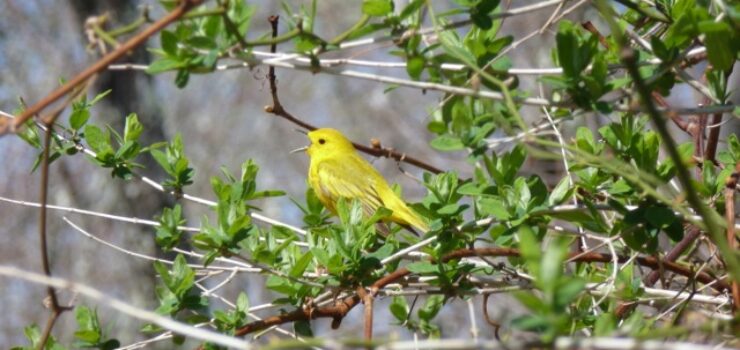As We Enter The Spring Migration, Please Do What You Can To Conserve Birds
Approximately 70% of all bird species are migratory and 80% of those that undergo migration do so at night. As countless numbers of birds pass overhead as you sleep, many of them will be drawn off course by bright lights scattered across the landscape below them, leading to fatigue and increasing risk of collisions with buildings. Approximately one billion birds die every year in North America alone from window collisions.
Want to help birds as they make their long journeys? Here are a few tips from the Audubon Society of Rhode Island:
- Lights out! Many migratory birds fly at night and the lights from buildings can confuse them, leading to unsuccessful migrations due to exhaustion and even death. Turning out the lights is beneficial for the health of other wildlife too, plus you will be conserving energy.
-
-
- Turn off all outdoor lighting during overnight hours (11pm – 6am) starting now through early June.
- Reduce the amount of light emanating from inside your home by closing blinds and shutters.
- If you must use outdoor lighting, switch to using full cutoff light fixtures and warm light sources (less than 3000K).
-
- Window collisions are one of the top threats to both migratory and resident birds. Window tape or decals are an easy way to make sure your windows are bird-safe. Specific bird-safe window designs that can be used in urban planning can also help address this threat.
- Keep your cats indoors or carefully supervised on a lead. Cats are domesticated animals, making them the greatest source of human-caused mortality for birds and mammals
- Go easy on the yard work and select native species of plants for your yard and garden. Every yard, park, school ground, and natural areas around businesses can act as stopping points for migratory birds, providing much-needed sources of refuge and food! A “messy” yard with native plant species encourages biodiversity which is good for birds and all life.
- Pesticides are dangerous for birds and wildlife – limit their use. If they are needed, follow the instructions carefully.
Thanks for helping the birds – now head outside with a field guide and search for all the different species that will pass through Rhode Island this spring! Visit the RI Audubon web site to find an upcoming birding outing with Audubon!
The banner image is a photograph of a Yellow Warbler in Charlestown by Frances Topping. Yellow Warblers are long distance migrants. They breed across North America and spend winters in Central America and northern South America. In both spring and fall, they migrate earlier than most other warblers.
